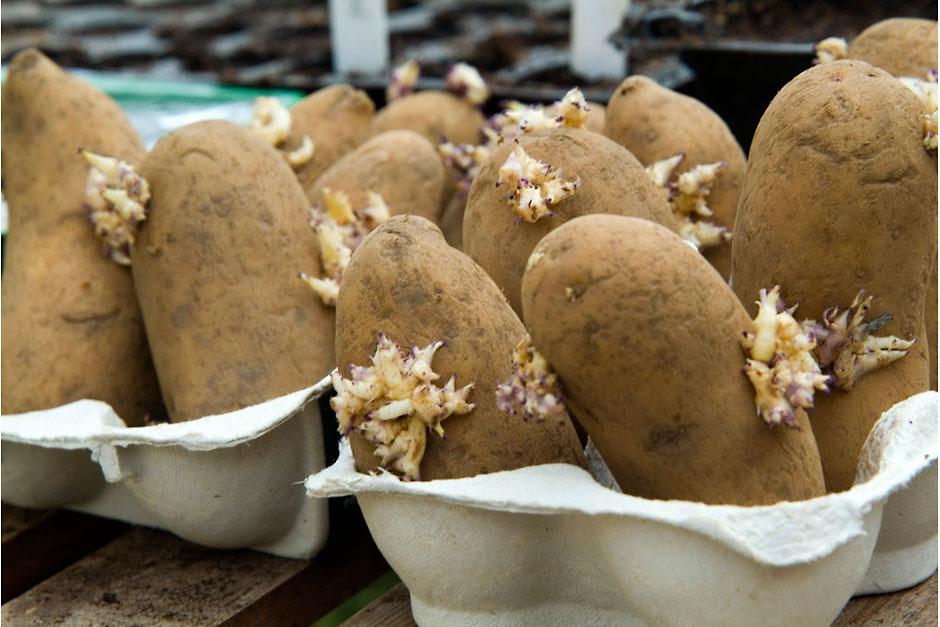Chitting Potatoes: Your Ultimate Guide to Pre-Sprouting Success
Welcome, green-thumbed parents! If you’re gearing up for the gardening season and want to give your family the joy of homegrown potatoes, you’re in the right spot. Our guide to chitting potatoes will walk you through the simple, yet effective process of pre-sprouting your spuds, ensuring you get the most out of your potato crop. Let’s cultivate a love for gardening together and dive into the world of chitting!
What is Chitting?
Chitting, my friends, is simply the process of encouraging your seed potatoes to sprout before planting them in the ground. It’s a fantastic way to get a head start on your growing season and often leads to a quicker and more robust harvest. Plus, it’s a great educational activity to share with your little gardeners – they’ll love watching the sprouts emerge!
Why Chit Potatoes?
There are a few joyous benefits to chitting potatoes that you’ll want to share with your budding gardening crew:
- Earlier Harvest: Getting a jump start means you’ll be enjoying those tasty tubers sooner rather than later.
- Stronger Starts: Pre-sprouted potatoes have stronger shoots, giving them a better chance of thriving once they hit the soil.
- Better Use of Space: By chitting, you’ll know which potatoes are viable, so you’re not wasting precious garden space on duds.
When to Start Chitting
Timing is everything! Aim to start chitting your potatoes about 4-6 weeks before you plan to plant them outdoors. This aligns perfectly with the early spring, just as the soil starts warming up. Remember, potatoes don’t fancy frost, so ensure that any risk of Jack Frost nipping at your garden is long gone before your chitted potatoes transition to their outdoor home.
Choosing the Right Seed Potatoes
First things first, selecting the right seed potatoes is essential for chitting success. Look for certified disease-free seed potatoes from a trusted garden center or online retailer. Here are a few quick tips for choosing the best contenders:
- Opt for varieties known for their robust flavor and performance in your local climate.
- Pick seed potatoes that are firm and blemish-free.
- Choose tubers with visible eyes – that’s where your sprouts will emerge!
Now that we’ve covered the basics, it’s time to roll up your sleeves and bring your little helpers along – chitting potatoes is an activity the whole family can enjoy. And who knows, by getting your children involved, you might even spark a lifelong passion for gardening!
Stay tuned, as we’ll be covering the step-by-step process of chitting potatoes in our next section, complete with tips and tricks to keep your family engaged and your potato plants joyful. Happy chitting!

5 Key Preparation Steps for Chitting Potatoes: A Parent’s Checklist
Before diving into the delightful world of chitting potatoes, there are a few important preparations you, as a parent, should make to ensure a seamless and educational experience. Here’s what you need to know:
1. Find the Perfect Spot
Seek out a bright, cool, frost-free spot in your home to chit your potatoes. A sunny windowsill or a cool greenhouse are ideal locations. Just ensure that the temperature is consistent and that there’s plenty of natural light – but not direct sunlight that could cause your potatoes to dry out or overheat.
2. Gather Your Supplies
You’ll need the following items to start your chitting adventure:
- Egg cartons or shallow boxes – to hold the seed potatoes upright
- Seed potatoes – purchase certified, disease-free seed potatoes
- A bright space – well-ventilated and free from frost
- Marker pens (optional) – to label varieties if planting more than one type
Having everything in one place will not only make the process simpler, but it will also turn it into an enjoyable activity you can share with your children.
3. Select Healthy Seed Potatoes
Make sure your seed potatoes are in tiptop condition. As you sort, engage your kids by turning it into a game – who can find the potato with the most eyes, or which potato looks like it might grow the tallest plant? This can be a fun way to educate them about what to look for in a healthy seed potato.
4. Arrange a Learning Session
Take this opportunity to teach your children about the life cycle of plants, photosynthesis, and the importance of patience and care in gardening. Chitting is a wonderful introduction to these concepts because it allows for visible progress that children can observe day by day.
5. Schedule Regular Check-Ins
Set aside time each day or week to check on the progress of your sprouting potatoes. This not only teaches responsibility but also helps you keep an eye out for any issues that might arise, such as mold or shriveling. Make it part of your daily routine – maybe right after breakfast or when the children return home from school.
Equipped with these tips and your newfound knowledge of chitting potatoes, you are now ready to embark on this gardening adventure with your kids by your side. Not only will it provide them with practical horticulture skills, but it will also instill in them an appreciation for where their food comes from.
As your seed potatoes begin to sprout and the moment to transport them into the garden draws near, the excitement in your household is sure to sprout as well! Next up, we’ll move on to the nitty-gritty of how to chit potatoes, ensuring that your family’s experience is as smooth as the skin of a freshly dug spud!
Remember, every chit counts as you’re cultivating more than just potatoes – you’re nurturing your family’s love for nature and the joys of gardening. So stay tuned, as the growth continues in both your garden and your children’s understanding of the wonderful world around them.
See more great Things to Do with Kids in New Zealand here. For more information see here
Disclaimer
The articles available via our website provide general information only and we strongly urge readers to exercise caution and conduct their own thorough research and fact-checking. The information presented should not be taken as absolute truth, and, to the maximum extent permitted by law, we will not be held liable for any inaccuracies or errors in the content. It is essential for individuals to independently verify and validate the information before making any decisions or taking any actions based on the articles.




